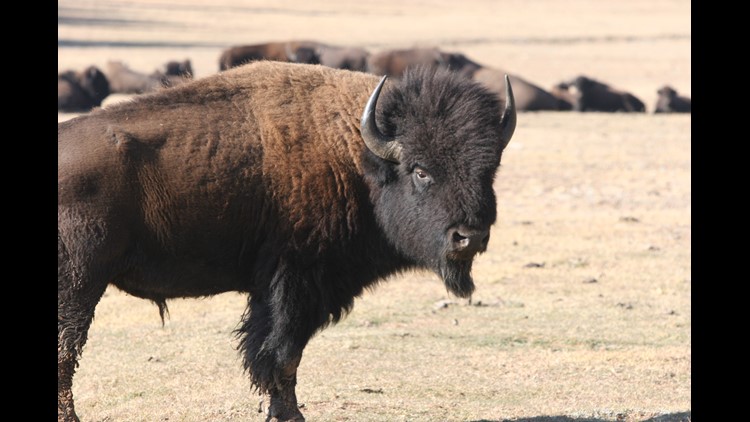Bison inside Grand Canyon National Park are having a population explosion in recent years, which is leading to a negative impact on the park's resources.
"Typically bison will move over great distance. They're confined here," said Martha Hahn, Grand Canyon National Park's chief of science and research.
Hundreds of bison inside the park are eating up grassland, drinking all the water, getting hit by cars, and damaging archeological sites.
Hahn has been monitoring them for nearly a decade.
"I've seen the population grow from 30, 40 animals in the park to well over 600," she said.
Well before the park was established, in the early 1900s, the American bison was near extinction. Two men, President Theodore Roosevelt and a bison conservationist known as Buffalo Jones, were trying to save the species.
"Together they decided to bring these bison to Grand Canyon," said Hahn.
To the North Rim to be exact, at elevations around 8,000 feet. To make the Bison more hearty for the cold and easier to corral, they were mix-bred with cattle.
But the so-called "beefalow" experiment failed as the animals migrated to lower ground in nearby House Rock Valley, where they stayed for 80 years outside of the park.
But the recent drought forced them back up into the park, looking for water. There, they've been trapped by the threat of hunters just outside.
"Hunting is available inside the forest but not in the park," said Hahn. "So that's kept them confined in the park with limited water and limited resources. They've figured out this area. Where to go and when to go."
So they stay and multiply.
"We have to really determine whether it's appropriate to, and to what degree is it appropriate to have bison here," said Hahn.
That's where NAU students come in, taking soil samples and monitoring vegetation as part of an environmental-impact study to see the Bison's effects on the environment.
"We're looking at ground cover and the different types of ground cover like grass and shrubs and litter and bare ground," said NAU junior Randi Notte. "It is interesting to see just how much damage they can do to an area. Even though they're cool to see, they really can eat the grass and compact the soil and that sort of stuff."
The biggest impact is on the limited water supply.
"It's having an effect on other native and natural and cultural resources, and that's what the park was set aside for," said Hahn.
It's created an unnatural situation inside one of the natural wonders of the world.
"It's not to say the animals are bad, it's just the situation that we've created," said Hahn.
NAU's environmental-impact study will be finished in spring, when researchers will recommend best practices to manage the bison populations in the park. Those could include removing some or even all bison from the park by corralling them and trucking them to other sites.



![635509859990626357-IMG-7988[ID=18675895] ID=18675895](http://www.gannett-cdn.com/-mm-/c1d1ff72b9d0a83da12421cfbf3873d408295d76/c=280-0-2264-1696/local/-/media/Phoenix/Phoenix/2014/11/07/635509859990626357-IMG-7988.JPG)
![Grand Canyon National Park bison[ID=18675677] ID=18675677](http://www.gannett-cdn.com/-mm-/c1d1ff72b9d0a83da12421cfbf3873d408295d76/c=280-0-2264-1696/local/-/media/Phoenix/Phoenix/2014/11/07/635509860018526915-IMG-7991.JPG)
